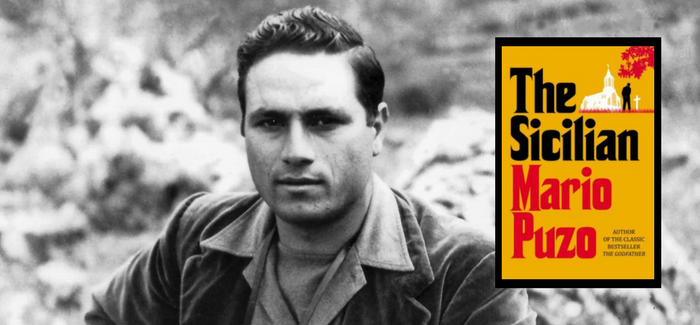|
Mario Puzo (1920 - 1999) is legendary for his novel The Godfather and the film trilogy it spawned. The American author won two Oscars for his screenplays for the first two films, and deservedly so - he not only wrote an epic saga of the American mafia but also played a vital part in helping Francis Ford Coppola adapt and expand it for the screen. Sadly, far fewer people know of the only literary expansion of the Godfather mythos written by Puzo himself - his later novel The Sicilian. Published in 1984, the novel is often referred to as a sequel to The Godfather but this is quite far from the truth. Just two characters from Puzo's 1969 novel appear in The Sicilian - these are Michael Corleone and Peter Clemenza, and are discussed only in a frame narrative which takes up just a fraction of the novel. This frame story takes place in 1950, towards the end of Michael's two-year exile in Sicily following his murder of a New York police captain (depicted in The Godfather and its film adaptation).
Michael is tasked by his father Vito with helping a young man escape Sicily and travel to the United States. This man is none other than the real-life bandit Salvatore "Turi" Giuliano, one of the most infamous figures in the chaotic history of 20th century Italy. The bulk of the novel is set in the seven years beginning in 1943, and focuses on Giuliano and his remarkable campaign. A charismatic "social bandit" who effectively ruled a large portion of Sicily for years, Giuliano is an ideal subject for Puzo's style and the novelist makes terrific entertainment out of his incredible real-life story. One of the things which makes The Godfather so remarkable is Puzo's ability to balance a strong plot with a lot of incidental, believable detail about the Mafia and the New York underworld - particularly about how crime is fatally intertwined with politics, business and the entertainment industries. The Sicilian is perhaps even more special in this regard. Its backdrop is the Sicily of the 1940s: impoverished, devastated by war, and strangled by corruption. Giuliano is at the centre of this unique time and place, caught within a web formed by the myriad factions in Sicily: the peasants, the Mafia, the Catholic Church, and the corrupt institutions of the despised Italian government in Rome. Again, as with The Godfather Puzo crafts memorable characters to populate this world. While Giuliano and his brother-in-arms Aspanu Pisciotta were real, most of the people in the novel are Puzo's inventions - but they have all the believable, corrupt glamour that made Don Corleone into an icon. These characters weave in and out of a complex but coherent plot based in large part on Giuliano's outrageous real-life adventures - and Puzo always finds room for fascinating insights into Sicilian culture, history, and politics. Like The Godfather before it, The Sicilian was quite swiftly adapted into a film. Released in 1987, it starred Christopher Lambert and was directed by Michael Cimino. At the time, Cimino was still recovering from the infamous disaster that was Heaven's Gate (1980). The film was criticised for its casting and received reviews that were mixed at best. An excellent novel in its own right, The Sicilian surely deserves to be better known - as does the remarkable story of Turi Giuliano. Fans of crime fiction and particularly The Godfather won't be disappointed by Puzo's book - it's a crime classic all of its own.
0 Comments
Your comment will be posted after it is approved.
Leave a Reply. |
About
I write about classic science fiction and occasionally fantasy; I sometimes make maps for Doom II; and I'm a contributor to the videogames site Entertainium, where I regularly review new games. Categories
All
|
